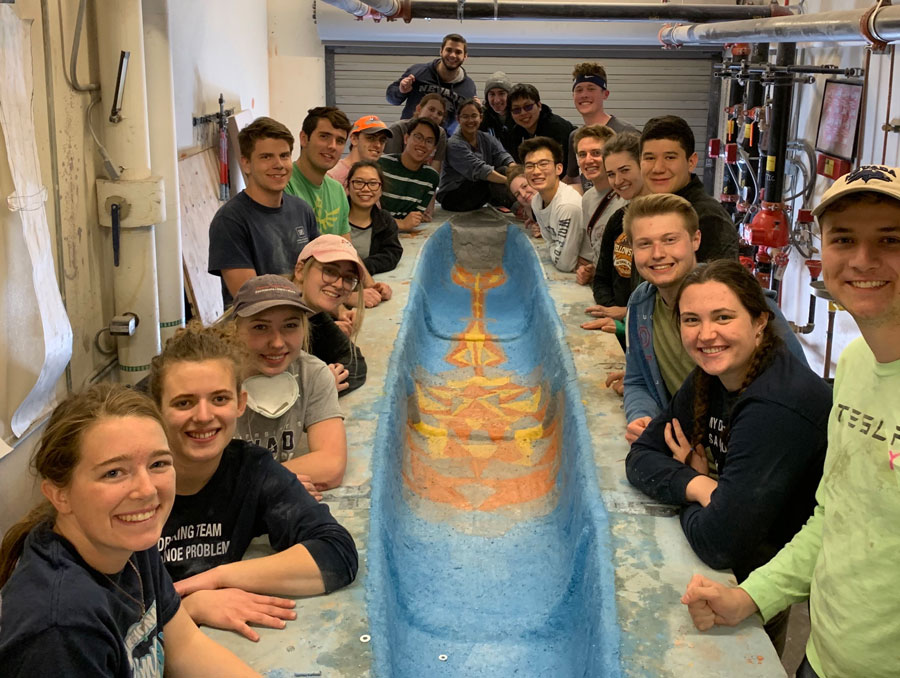The Concrete Canoe team at the University of Nevada, Reno has been hard at work casting their canoe and training in order to prepare for the annual Mid-Pacific Conference, the competition between 14 universities in the West. Because of the coronavirus pandemic, the American Society of Civil Engineers event was cancelled indefinitely.
The competition, originally scheduled for April 23-25 at the University of California, Berkeley, is designed to provide civil engineering students an opportunity to gain hands-on practical experience and leadership skills as they apply concrete technology and project management concepts. There are several facets to the competition, such as paddling races, compiling a technical report and conducting presentations. Winners of regional competitions around the country compete in the national competition traditionally held in June.
The team’s work began in September following the release of the rules, regulations and design specifications set by the American Society of Civil Engineers, or ASCE. According to the University’s ASCE chapter website, the process takes the team of 20 students about 4,000 hours to complete. The group recruited new students during the fall and spring club fairs hosted by the University, along with the College of Engineering club fairs throughout the semester.
Kelly Keselica, lecturer in the College of Engineering, is the club’s faculty advisor and has many years of experience guiding the team to regional and national victories.
“As an advisor I take the backseat and let the students design and construct the canoe themselves,” she said. “It’s important to allow them to practice design and management skills before starting their professional careers. I generally step in if they run into problems or need assistance moving forward with the project.”
The building process begins with acquiring polyurethane foam for the mold of the canoe, which they send to a local company to mill it into the shape of a canoe based on their specifications. Once it’s cut, the team sands down any irregularities and then applies a layer of resin to ensure the concrete doesn’t stick to the foam layer. The team waxes the mold so the concrete canoe pops off easily. Two layers of concrete—an outer and inner layer— are packed with carbon fiber mesh between. The mesh serves as a primary reinforcement to make sure the canoe can withstand the pressures of the competition. The concrete is cured at 75 degrees Fahrenheit to ensure high strength, and once finished, it’s popped out of the mold and then sanded down to a smooth finish. The aesthetic theme for the canoe this year was based on Nevada Nuclear Testing, with an inside design of a mushroom cloud against a sky-blue background.
“I find it interesting to talk to any past project managers because they understand the amount of work and stress the project entails,” said Colton Dodge, a sophomore majoring in civil engineering and a team leader. “We have a ton of alumni support. Many alumni work in these [sponsor] offices and are eager to help support us in any way they can.”
Due to the event cancellation, ASCE hopes to showcase every team’s canoe in the near future.
“We’re looking forward to next year’s competition so much more now,” Keselica said.












